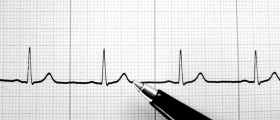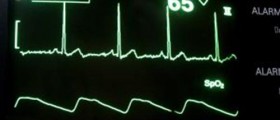
Our pulse is nothing more and nothing less than the number of heartbeats our body performs per minute. This phenomenon can be measured anywhere where we can press our arteries against a bone and feel palpitations. We calculate our pulse by counting the number of these palpitations per minute. Thus, there is no difference between our heart rate and our pulse rate.
Heart Rate vs Pulse Rate
As it was already mentioned above, our pulse rate is the number of beats our heart makes per minute. This number can help medical staff indicate if one is healthy, sick or in a life-threatening situation. Pulse rate is usually measured on the arteries on our neck, wrist, knee, inner part of the elbow or near our ankle joint. On the other hand, heart rate is the mere number of heart beats per minute. The two values can sometimes vary, depending on the type of disorder the patient is suffering from.
What Triggers Pulse Rate Anomalies?
One of the factors which can affect our pulse, making it irregular is our body temperature. Also, our physical size, level of fitness, medications we are using or the position of our body can all make a difference. Finally, if we are suffering from some kind of a mental state or are engaged in physical exercising, our pulse rate is bound to be abnormal as well.
So, our resting pulse rate differs our active pulse rate. Therefore, each time you are working out excessively, your pulse rate will rise above that which you have while you are in a state of stagnation.
Facts about Resting Pulse Rate
When men are resting, their pulse rate is about 70 bpm. Pulse rates of 50 and 60 signify a healthy heart as well. However, everything above 70 bpm stands for heart complications.
As for women, everything between 60 and 70 bpm is considered average. Moreover, their pulse rate tends to drop with age. However, some women may even have a pulse rate of 50 or 40 bpm, which is perfectly fine and healthy, taking into consideration that they are involved into certain kinds of sports they perform regularly and vigorously.
Finally, children, while being 1 year old and younger, have their pulse rates as high as 100 or even 160 bpm. Later on, until they are 11, their resting pulse rate ranges between 100 and 140 bpm.
Also, while we sleep, our pulse rate can go below 50 or jump above 100. Yet, this is normal. If it happens while we are awake, this is considered dangerous and people experiencing these pulse rate abnormalities should seek medical assistance.













_f_280x120.jpg)



Your thoughts on this
Loading...